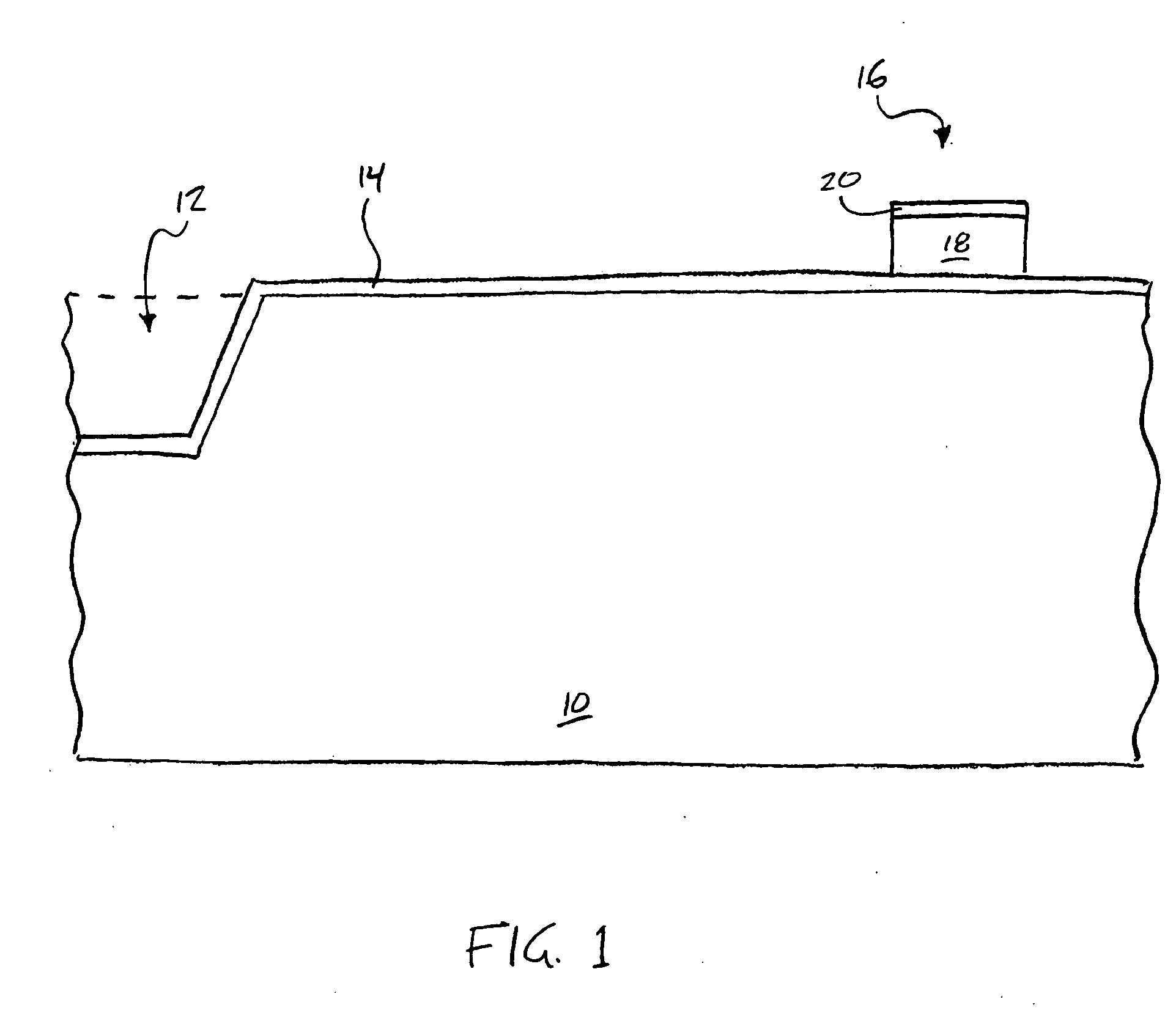Image sensor with improved surface depletion
a surface depletion and image sensor technology, applied in the field of imager devices, can solve the problems of difficult to create the pinning effect in the photodiode, cross-talk between pixels, and complex optimization problems of the photodiode and the transfer gate region, and achieve the effect of facilitating the pinning
- Summary
- Abstract
- Description
- Claims
- Application Information
AI Technical Summary
Benefits of technology
Problems solved by technology
Method used
Image
Examples
Embodiment Construction
[0016] Although this invention will be described in terms of certain exemplary embodiments, other embodiments will be apparent to those of ordinary skill in the art, which also are within the scope of this invention. Accordingly, the scope of the invention is defined only by reference to the appended claims.
[0017] The term “substrate” in the following description refers to any supporting layer suitable for fabricating an integrated circuit, typically semiconductor based, but not necessarily so. A substrate may be silicon-based, may include epitaxial layers of silicon supported by a base semiconductor foundation, can be sapphire-based, silicon-on-insulator (SOI), metal, polymer, or any other materials suitable for supporting an integrated circuit or image sensor. When reference is made to a substrate or wafer in the following description, previous process steps may have been utilized to form regions or junctions in or over a base semiconductor or foundation.
[0018] The term “pixel” ...
PUM
 Login to View More
Login to View More Abstract
Description
Claims
Application Information
 Login to View More
Login to View More - R&D
- Intellectual Property
- Life Sciences
- Materials
- Tech Scout
- Unparalleled Data Quality
- Higher Quality Content
- 60% Fewer Hallucinations
Browse by: Latest US Patents, China's latest patents, Technical Efficacy Thesaurus, Application Domain, Technology Topic, Popular Technical Reports.
© 2025 PatSnap. All rights reserved.Legal|Privacy policy|Modern Slavery Act Transparency Statement|Sitemap|About US| Contact US: help@patsnap.com



